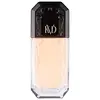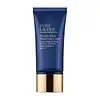KVD Vegan Beauty Good Apple Serum Foundation Versus Estée Lauder Double Wear Maximum Cover Camouflage Make Up Face And Body SPF 15
What's inside
What's inside
 Key Ingredients
Key Ingredients

 Benefits
Benefits

 Concerns
Concerns

 Ingredients Side-by-side
Ingredients Side-by-side

Water
Skin ConditioningDimethicone
EmollientIsododecane
EmollientTrimethylsiloxysilicate
EmollientGlycerin
HumectantCetyl PEG/PPG-10/1 Dimethicone
EmulsifyingPyrus Malus Fruit Extract
Skin ConditioningCydonia Oblonga Leaf Extract
Skin ConditioningEthylhexylglycerin
Skin ConditioningPhenoxyethanol
PreservativeDimethicone Crosspolymer
Emulsion StabilisingSilica
AbrasiveSodium Chloride
MaskingDimethicone/Vinyl Dimethicone Crosspolymer
Skin ConditioningMagnesium Sulfate
Triethoxycaprylylsilane
Sodium Dehydroacetate
PreservativeDisteardimonium Hectorite
StabilisingBenzoic Acid
MaskingC24-28 Alkyl Methicone
EmollientDehydroacetic Acid
PreservativePropylene Carbonate
SolventPotassium Sorbate
PreservativeCitric Acid
BufferingSodium Benzoate
MaskingPentaerythrityl Tetra-Di-T-Butyl Hydroxyhydrocinnamate
AntioxidantTocopherol
AntioxidantAluminum Hydroxide
EmollientIron Oxides
Titanium Dioxide
Cosmetic ColorantWater, Dimethicone, Isododecane, Trimethylsiloxysilicate, Glycerin, Cetyl PEG/PPG-10/1 Dimethicone, Pyrus Malus Fruit Extract, Cydonia Oblonga Leaf Extract, Ethylhexylglycerin, Phenoxyethanol, Dimethicone Crosspolymer, Silica, Sodium Chloride, Dimethicone/Vinyl Dimethicone Crosspolymer, Magnesium Sulfate, Triethoxycaprylylsilane, Sodium Dehydroacetate, Disteardimonium Hectorite, Benzoic Acid, C24-28 Alkyl Methicone, Dehydroacetic Acid, Propylene Carbonate, Potassium Sorbate, Citric Acid, Sodium Benzoate, Pentaerythrityl Tetra-Di-T-Butyl Hydroxyhydrocinnamate, Tocopherol, Aluminum Hydroxide, Iron Oxides, Titanium Dioxide
Isododecane
EmollientIsohexadecane
EmollientMethyl Methacrylate Crosspolymer
Petrolatum
EmollientGlyceryl Stearate
EmollientDisteardimonium Hectorite
StabilisingHydrogenated Styrene/Isoprene Copolymer
Titanium Dioxide
Cosmetic ColorantMicrocrystalline Wax
Emulsion StabilisingKaolin
AbrasiveCholesterol
EmollientAloe Barbadensis Leaf Extract
EmollientFusanus Spicatus Wood Oil
MaskingTocopheryl Acetate
AntioxidantLinoleic Acid
CleansingGlycine Soja Oil
EmollientStearyl Glycyrrhetinate
Skin ConditioningBisabolol
MaskingSilica
AbrasivePropylene Carbonate
SolventMethyldihydrojasmonate
MaskingPolyethylene
AbrasiveDimethyl-7-Octene-1,6-Diol
PerfumingPolyglyceryl-3 Diisostearate
EmulsifyingPentaerythrityl Tetra-Di-T-Butyl Hydroxyhydrocinnamate
AntioxidantPhenethyl Alcohol
MaskingMica
Cosmetic ColorantCI 77891
Cosmetic ColorantIron Oxides
CI 77288
Cosmetic ColorantCI 77289
Cosmetic ColorantCI 77163
Cosmetic ColorantIsododecane, Isohexadecane, Methyl Methacrylate Crosspolymer, Petrolatum, Glyceryl Stearate, Disteardimonium Hectorite, Hydrogenated Styrene/Isoprene Copolymer, Titanium Dioxide, Microcrystalline Wax, Kaolin, Cholesterol, Aloe Barbadensis Leaf Extract, Fusanus Spicatus Wood Oil, Tocopheryl Acetate, Linoleic Acid, Glycine Soja Oil, Stearyl Glycyrrhetinate, Bisabolol, Silica, Propylene Carbonate, Methyldihydrojasmonate, Polyethylene, Dimethyl-7-Octene-1,6-Diol, Polyglyceryl-3 Diisostearate, Pentaerythrityl Tetra-Di-T-Butyl Hydroxyhydrocinnamate, Phenethyl Alcohol, Mica, CI 77891, Iron Oxides, CI 77288, CI 77289, CI 77163
Ingredients Explained
These ingredients are found in both products.
Ingredients higher up in an ingredient list are typically present in a larger amount.
Disteardimonium Hectorite comes from the clay mineral named hectorite. It is used to add thickness to a product.
It can also help stabilize a product by helping to disperse other ingredients.
Hectorite is a rare, white clay mineral.
Learn more about Disteardimonium HectoriteIsododecane is a fragrance, emollient, and solvent.
As an emollient, it helps your skin stay soft and hydrated. Emollients help trap moisture into your skin.
Isododecane's role as a solvent makes it a great texture enhancer. It spreads smoothly on skin and does not leave a sticky feeling behind. Isododecane also helps prevent color transfer in makeup products.
Isododecane is not absorbed into skin.
Learn more about IsododecanePentaerythrityl Tetra-Di-T-Butyl Hydroxyhydrocinnamate (long name, huh?) is a synthetic antioxidant.
It is used to help stabilize other antioxidants or prevent the color from changing in a product.
As an antioxidant, it helps fight free-radical molecules. Free-radical molecules are capable of damaging our cells and other genetic material. Thus, antioxidants may reduce the signs of aging.
This ingredient is oil-soluble.
Learn more about Pentaerythrityl Tetra-Di-T-Butyl HydroxyhydrocinnamateThis ingredient is a solvent. It helps dissolve active ingredients and alter the texture of products.
Propylene Carbonate is commonly used in makeup and with clay, such as montmorillonite or bentonite.
Studies show this ingredient to be safe for cosmetics. When it is undiluted, it can cause skin irritation. (It is always diluted in skincare and makeup). This ingredient is water-soluble.
Propylene Carbonate is created from propylene glycol and carbonic acid.
Learn more about Propylene CarbonateSilica, also known as silicon dioxide, is a naturally occurring mineral. It is used as a fine, spherical, and porous powder in cosmetics.
Though it has exfoliant properties, the function of silica varies depending on the product.
The unique structure of silica enhances the spreadability and adds smoothness, making it a great texture enhancer.
It is also used as an active carrier, emulsifier, and mattifier due to its ability to absorb excess oil.
In some products, tiny microneedles called spicules are made from silica or hydrolyzed sponge. When you rub them in, they lightly polish away dead skin layers and enhance the penetration of active ingredients.
Learn more about SilicaTitanium dioxide is a mineral UV filter widely used in sunscreens and cosmetics.
It is one of only two UV filters officially classified as “mineral” by regulatory agencies, the other being zinc oxide.
Titanium dioxide provides broad-spectrum protection mostly in the UVB and UVAII range, with some protection in the UVAI range.
While its UVA protection isn’t as strong as zinc oxide’s, the difference is minor.
A common myth is that mineral UV filters reflect UV light. However, modern research shows titanium dioxide absorbs UV radiation like chemical filters (~95% absorption & 5% reflection).
Thanks to its non-irritating nature, titanium dioxide is suitable for sensitive, acne-prone, or redness-prone skin. It is unlikely to cause "eye sting" like other sunscreen ingredients.
A major drawback of this ingredient is its white cast and thick texture. This is why mineral sunscreens often leave a white cast and are less cosmetically elegant than chemical/hybrid sunscreens.
To improve white cast and spreadability, micronized or nano-sized titanium dioxide is often used.
There are ongoing concerns surrounding nano-titanium oxide's impact on marine ecosystems.
There is no conclusive evidence that any form of titanium oxide (or any other sunscreen ingredients) will cause harm to marine ecosystems or coral reefs. The science is still developing but many consumers are keeping a close eye on this issue.
Please note, many destinations have reef-safety sunscreen rules. For instance, the U.S. Virgin Islands advises all visitors to use non-nano mineral sunscreens.
Nano mineral sunscreens once raised safety concerns about absorption into skin.
Extensive research has shown that they do not penetrate healthy or damaged skin; they remain safely on the surface and the top layer of dead skin (stratum corneum).
You'll likely find titanium dioxide bundled with alumina, silica, or dimethicone. These ingredients help make titanium dioxide highly photostable; this prevents it from interacting with other formula components under UV light.
Learn more about Titanium DioxideThis ingredient is a combination of red, black, and yellow iron oxide pigments. This combination of colors is usually found in foundation, because it results in a "skin" color.